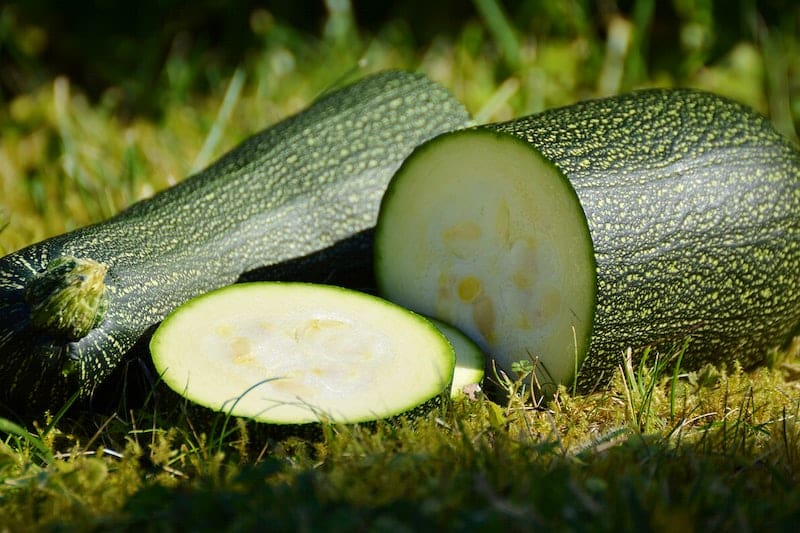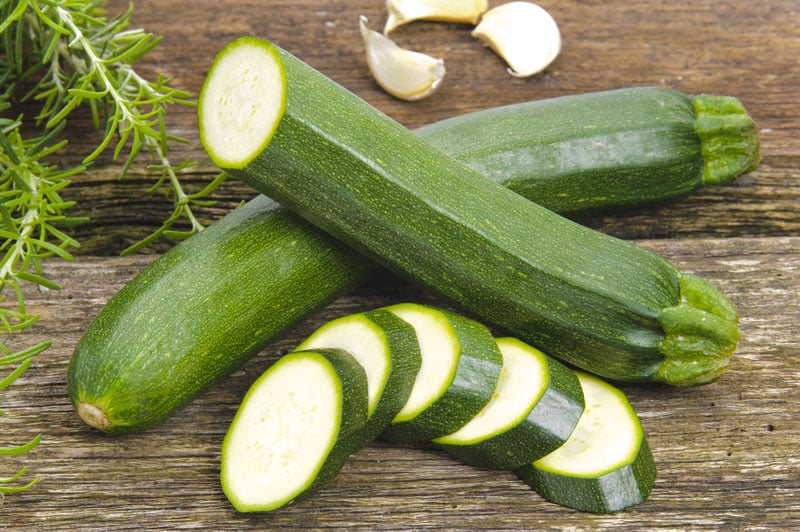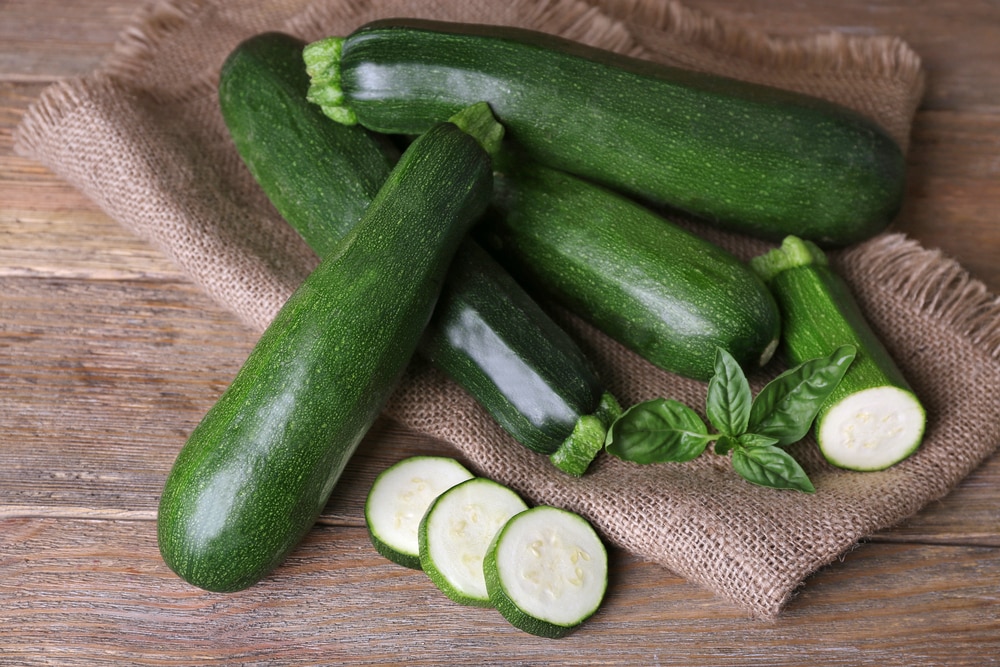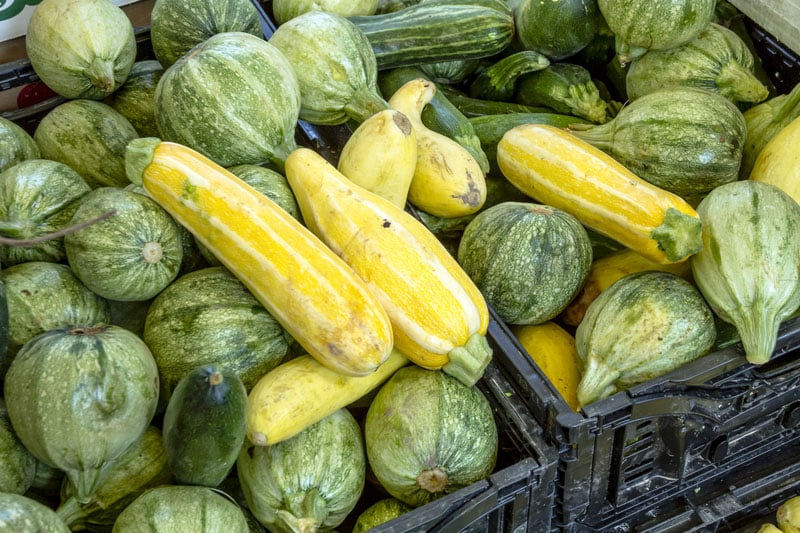
Want to know your squashes better? Here, we compare calabacita squash and Zucchini- how different can they be? In many regions of the world, squash and Zucchini have been used interchangeably.
They are very alike in their appearances, have similar textures, and even their tastes are quite alike to many. It is easy to confuse one for the other. As it happens, all zucchinis are squashes. Squashes fall into two categories; summer and winter.
The winter squashes are types like acorns, spaghetti squash, and acorns. Whereas summer squashes have pattypan and crookneck. Zucchini lies in the summer squash category. Let’s dive deeper into the detailed characteristics of the two.
Comparison Table
| Features | Calabacita Squash | Zucchini |
|---|---|---|
| Flavor | Mildly sweet | Bitter |
| Family | Cucurbits | Gourd |
| Season | Winter | Summer |
| Color | Green to yellow orange | Green |
Calabacita Squash vs Zucchini
Calabacita Squash
Tatum, the Mexican heirloom squash, or the Calabacita squash are some of the many names this squash has. This type of squash is light green in color and has white and dark green spots sprinkled across its surface. It is club-shaped and sometimes may even be spherical or rounded.
It is a favorite among Mexicans, which is why it is also named the Mexican heirloom squash. The calabacita squash is used to make various dishes; gluten-free pasta noodles, ratatouille, calabacitas con elote, etc. They taste heavenly when battered and fried.
You can also use them for stuffed dishes. Hollow it out by scooping out the pulp, and then fill in the stuffing of your choice. Slicing and steaming is also a popular way of cooking this squash.
Taste
Calabacita squash has a very mild flavor and lies on the side of sweet. If you want a zucchini-like flavor but with subtle hints of sweetness, calabacita squash is the way to go. If you do not like the bitterness of Zucchini, you can easily replace it with this calabacita squash.
Where Zucchini brings overwhelming bitterness to a dish, calabacita remains largely neutral. Other names of Calabacita Squash include Mexican gray squash, hot climate squash, Mexican heirloom squash, tatuma, tatume.
Zucchini
Zucchini is also known as courgette or baby marrow. As mentioned previously, it is a summer squash and perhaps the most popular of all the squashes. It is used extensively in all cuisines and can be used in a variety of ways.
Taste
Zucchini is loved for its mildly sweet taste. Because of their similar appearances, Zucchini is often confused with the same as cucumber. Although they may have similar outlooks, the textures inside, the taste, and the water content differ greatly.
Where you can eat cucumber raw, you cannot eat raw Zucchini. Although it is safe to eat, the taste of raw Zucchini is just too bitter. The interior of the Zucchini is off-white in color. The texture is fleshy, and it feels spongy. It is easy to scoop out and is often used in stuffed dishes.
A good-tasting zucchini measures up to six and eight inches. Keep that in mind for when you are out doing groceries next time! Zucchinis are found in different shades of green. Two types of Zucchini are; golden Zucchini and globe zucchini.
The golden Zucchini has a milder taste and deep yellow or orange color. Whereas the globe or rounded zucchini may have a pale yellow or green color. It also has a broader circumference (about three inches).
The latter is designed for stuffing and is mainly used for such recipes. The flowers of the zucchini plant are also edible and are sometimes fried and eaten.
Calabacita Squash vs Zucchini: How to eat them?
There are a variety of ways in which you can cook and serve these two. You would be surprised to know that in spite of being used in savory dishes and treated as vegetables, they are, in fact, fruits! You can serve them fresh in salads or couple them up with dips for a quick snack.
However, keep in mind that raw Zucchini will have a bitter taste, so you may not be able to eat it just like that. Perhaps spraying it in a little oil, lightly frying it, and then serving it with a side can impart a good flavor.
Calabacita squash, on the other hand, has a mildly sweet flavor because of which it can be used raw in salads and such. Other ways to eat these two are in savory dishes. Zucchini and calabacita can be used in bakes and pies or be used as a base for one of those stuffed dishes.
Zucchini is a versatile vegetable, often steamed, baked, grilled, fried, cooked, and even barbecued.
Calabacita Squash vs Zucchini: Nutrition
Since they both belong to the same family, i.e., squashes, they both have the same nutrient count. On average, a 100g of squash contains:
- 1.2 g of protein
- 1.1 g of fiber
- 16 calories
- 3.4g of carbohydrates
- 95g of water
- 0.2g of fats
- 2.2g of sugars
- 20% of Vitamin C
- 17% of Vitamin B6
- 8-12% of Vitamin B2
Additionally, Zucchini has 0g of fat.
Calabacita Squash vs Zucchini: Health Benefits
As whole plants, Zucchini and calabacita squash have numerous health benefits. They are very good sources of vitamins, rich in minerals like manganese and magnesium, and high in antioxidants.
They also have a high water and fiber content which is amazing for the health of your gut. Being high in vitamins means squashes are especially good for your eyes. Not only do they help to prevent eye diseases, but they also keep your delicate eye muscles healthy.
The minerals ensure your heart is in a good, healthy condition, and any heart-related diseases are kept to a minimum. In addition to that, they may even prove to be good for those suffering from diabetes as they maintain the body’s sugar levels.
The levels of insulin and glucose (forms of sugar in the body) are regulated well by the components in squashes. They also keep your skin healthy; the high Vitamin C content is responsible for this benefit.
Lastly, squashes are known to have cancer-fighting compounds. Offering a multitude of health benefits, squashes must be made a part of your everyday diet.
Final Verdict
Calabacita Squash and Zucchini are types of squashes. Where Zucchini has more of a bitter taste, the calabacita squash has a mildly sweet flavor. Although both may be available all year round, zucchini peaks in the summer season, whereas calabacita squash peaks in the winter.
Both have slight differences that make them stand apart, but they can be used interchangeably in recipes. If you want a sharp, strong taste, go for Zucchini. But if you prefer a milder, more subtle flavor, then calabacita squash is your best bet.



